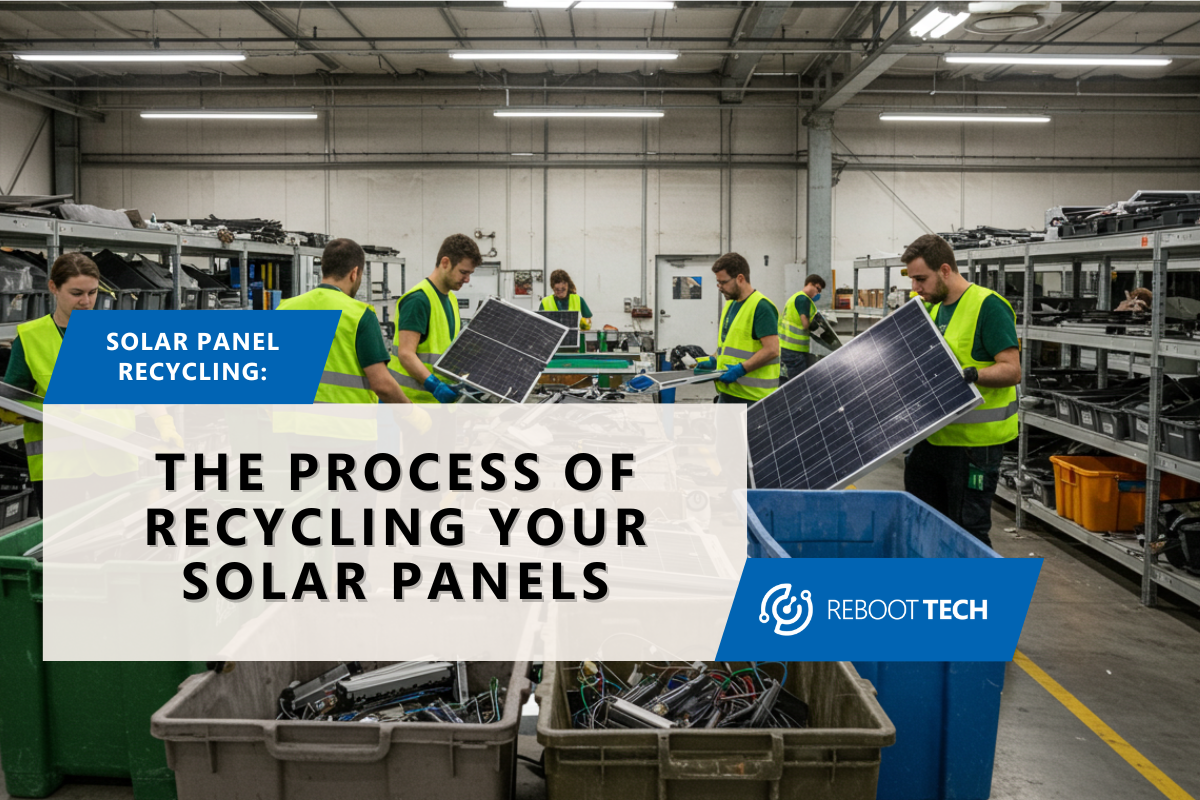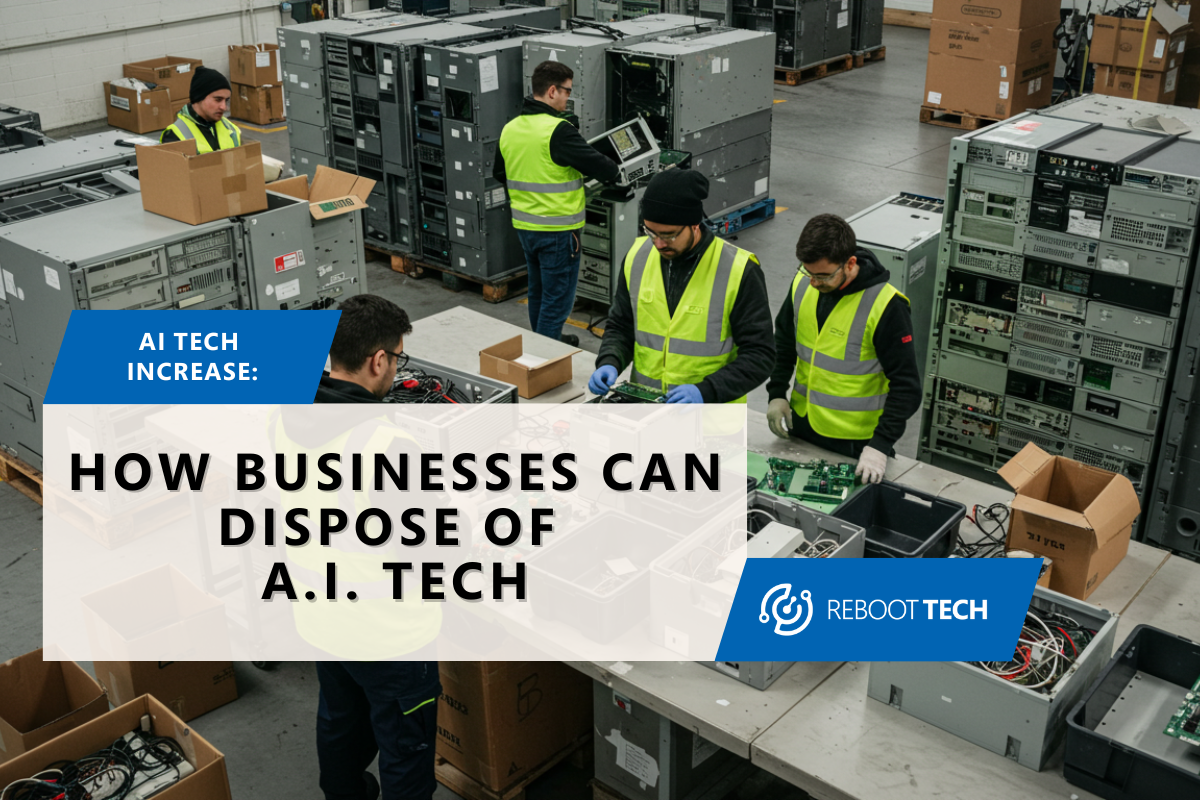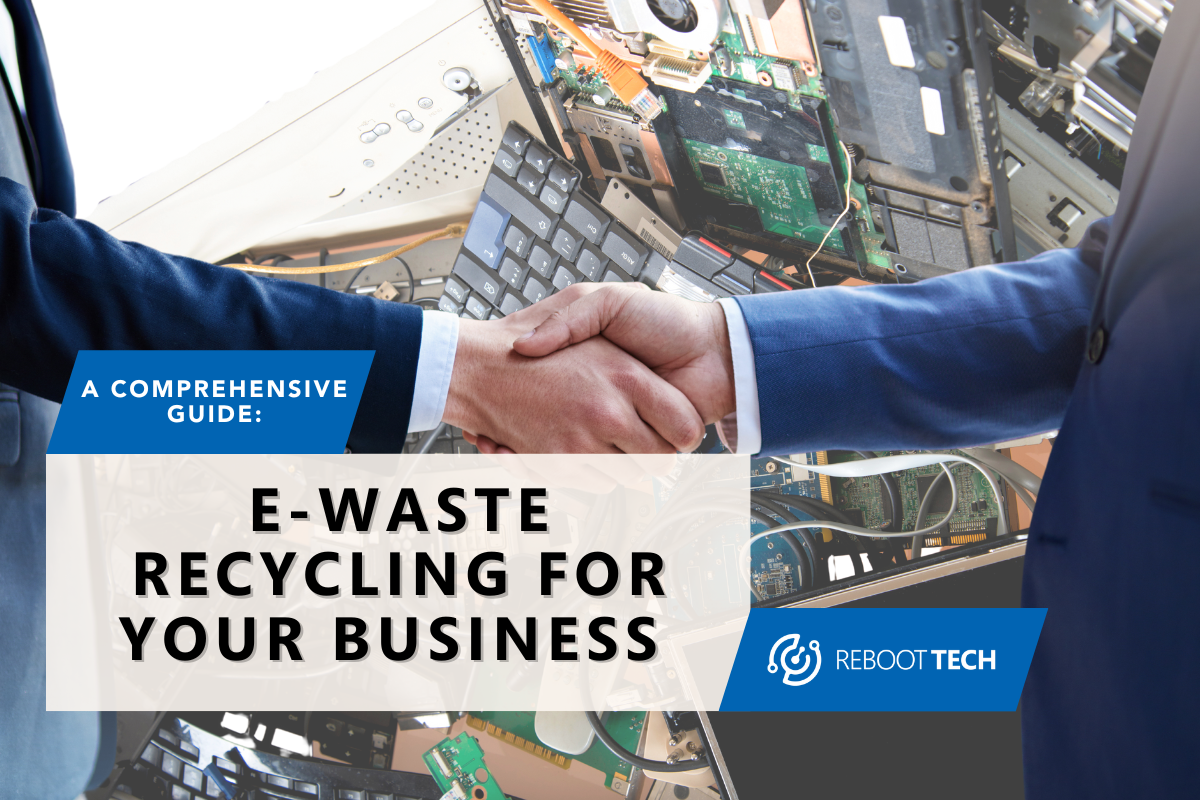
A Comprehensive Guide: E-Waste Recycling for Businesses
Have you ever wondered what happens to the old electronics your business discards? Electronic waste recycling is not just an environmental responsibility but a legal obligation in many places. As technology advances at a breakneck speed, businesses constantly upgrade their electronic devices, leading to an ever-growing pile of e-waste. If not properly managed, can cause significant harm to the environment and pose security risks to your business.
In this article, we will dive into the world of e-waste recycling, what it is, why it’s a growing concern, and how your business can stay compliant with recycling laws and regulations. Additionally, we will discuss the e-waste recycling process, the importance of working with certified recyclers, and how to ensure the safe destruction of sensitive data. By the end of this article, you’ll have a comprehensive understanding of everything your business needs to know about the e-waste recycling industry.
Join us on this journey as we uncover practical steps your business can take to manage e-waste responsibly. Whether you’re a small startup or a large corporation, these insights will help you make informed decisions that benefit both your business and the planet.
What is E-Waste?
E-waste, or electronic waste, refers to discarded electronic products and equipment. This includes everything from old computers, smartphones, and tablets to office equipment like printers and copiers.
The rapid pace of technological advancement has led to a significant increase in e-waste production. In 2022 alone, a record 62 million tonnes of e-waste was generated worldwide, up 82% from 2010. This figure is expected to rise by another 32% to 82 million tonnes by 2030.
E-waste is harmful to the planet for several reasons. Firstly, it contains hazardous materials such as lead, mercury, and cadmium, which can leach into the soil and water, causing severe environmental damage. Secondly, e-waste is often improperly disposed of, leading to the loss of valuable and strategically important resources. For example, only 1% of the demand for rare earth elements is currently met, meaning billions of dollars worth of these resources are squandered.
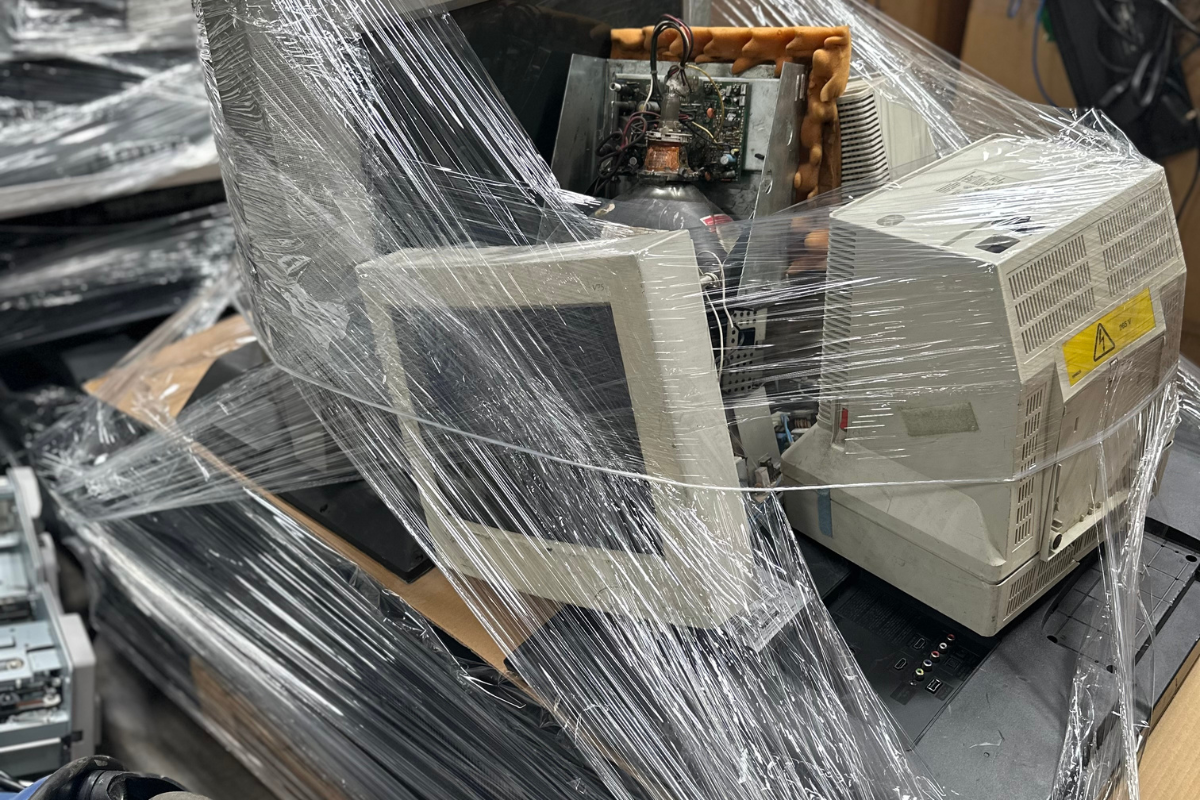
Staying Compliant with Laws and Regulations
In the US, recycling rules are getting tougher. There’s no single federal law for recycling, so each state and city often has its own requirements. Some states, like Wisconsin and California, have even banned certain recyclable materials from landfills. Additionally, over 25 states have laws for electronics recycling, according to a recycling group.
For businesses in California, following the Electronic Waste Recycling Act (Senate Bill 20) is crucial. This law creates a system to pay for collecting and recycling specific electronics. It aims to help businesses that recycle responsibly, offer free drop-off options, and reduce illegal dumping of electronics. The E-Waste Act also adds a fee to the price of certain electronics sold in California, and assigns a state agency (CalRecycle) to manage a payment system for collectors and recyclers.
The Process of Recycling E-Waste
1. Collect and Transport: E-waste is gathered from businesses and other places, then taken to recycling facilities.
2. Sort and Take Apart: Once there, the e-waste is sorted by type and broken down to separate reusable parts from anything that can’t be recycled.
3. Erase Data Completely: For any devices that store information, special programs are used to wipe the data clean, or they are physically destroyed to make sure no information leaks out.
4. Shred and Separate: The broken-down e-waste is shredded into small pieces, and different materials like metals, plastics, and glass are separated using special techniques.
5. Recover Valuable Materials: Precious materials like gold, silver, copper, and rare earth elements are extracted and made ready for reuse in new products.
6. Dispose of What’s Left: Anything that can’t be recycled and anything hazardous is thrown away following safety rules to avoid pollution. All e-waste will be properly disposed of.
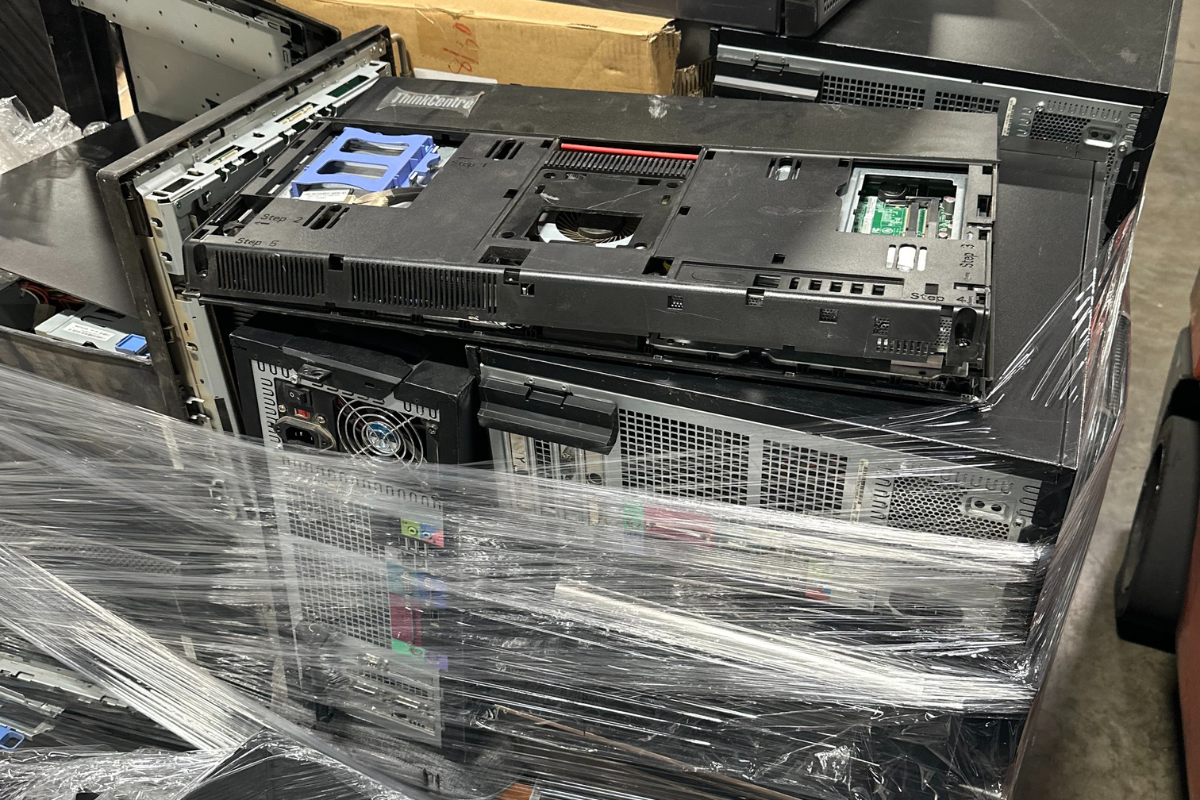
Working with Certified E-Waste Recyclers
The first step you may be thinking is to simply type, “E-Waste Recycling Center Near Me” and pick the first one you find. However, to ensure your business is recycling e-waste responsibly, it is crucial to work with certified e-waste recyclers who know what they’re doing. But what do you need to look out for when picking a reliable e-waste disposal company?
Look for recyclers who hold certifications such as R2v3 and ISO. The R2v3 (Responsible Recycling) certification is the leading global standard for electronics recyclers, focusing on quality, environmental and social responsibility, and worker health and safety. ISO certifications, like ISO 14001, ensure that the recycler has an effective environmental management system in place.
Certified recyclers must comply with regulations set by the Environmental Protection Agency (EPA) and the Department of Toxic Substances Control (DTSC). The EPA oversees the management of hazardous waste, including e-waste, while the DTSC develops regulations for the proper handling, recycling, and disposal of electronic devices.
What Happens to My Sensitive Data When I Recycle Electronics?
One of the biggest concerns businesses have about recycling electronics is data security. Reputable e-waste recyclers offer several ways to completely destroy data:
1. Software Wiping: Businesses can be worried about keeping their information safe when recycling electronics. Luckily, responsible e-waste recyclers use special programs to completely erase data from hard drives and other storage devices. This software writes over the information so many times that it’s impossible to get it back.
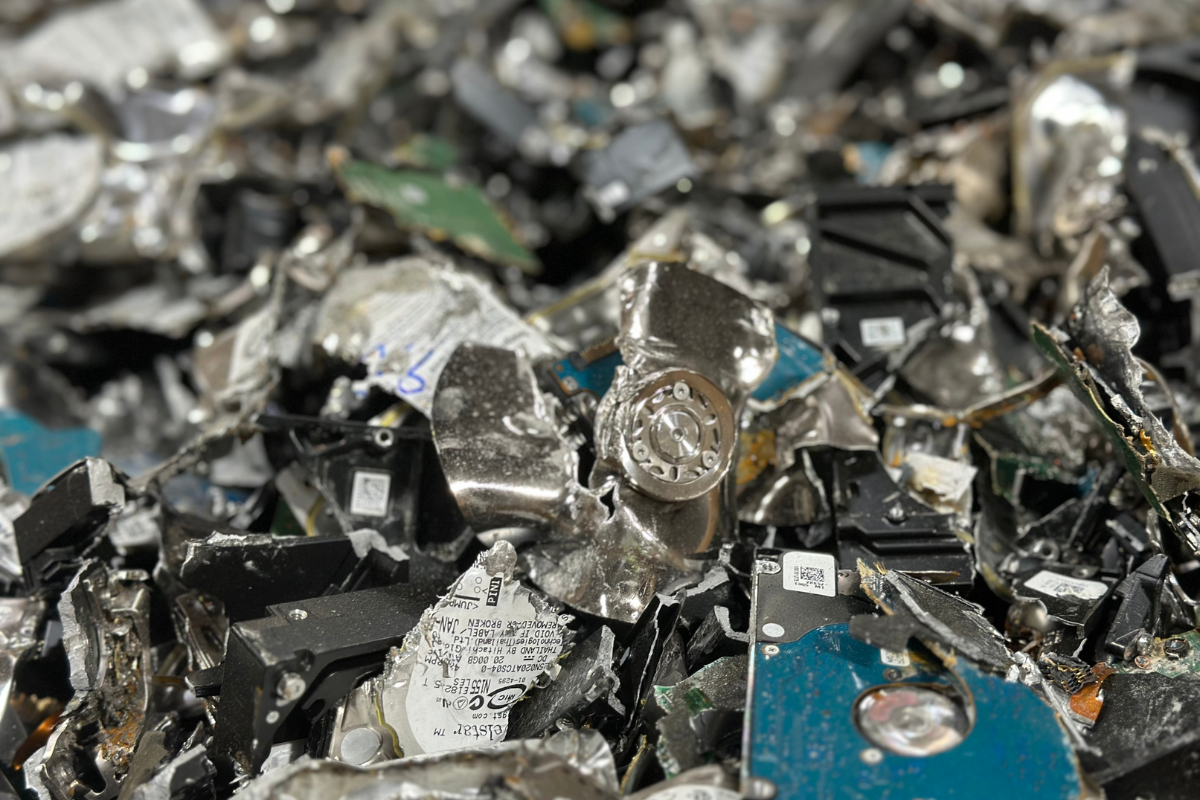
2. Physical Destruction: Sometimes, software wiping isn’t enough. For maximum security, some e-waste recyclers can physically destroy hard drives. This might involve shredding, crushing, or using a powerful magnet to erase the data entirely.
3. IT Asset Disposition (ITAD): This is a fancy way of saying they securely get rid of your old electronics while protecting the environment. ITAD services erase data, refurbish usable equipment for resale, and dispose of everything else responsibly.
Other Recycling Options
While working with professional e-waste recyclers is the best option for businesses, there are other ways to manage electronic waste. One alternative is donating old electronics to schools, non-profits, or charities. This not only helps those in need but also extends the life of the devices.
However, when dealing with bulk e-waste recycling and data destruction, it’s crucial to use professional services to avoid risks like data breaches. Many e-waste recyclers offer convenient options such as on-site pickups, recycling boxes, or drop-off facilities. Companies like Reboot Tech provide free quotes and tailored solutions to meet your business’s recycling needs.
A Sustainable Future for Businesses
Getting rid of old electronics the right way is important for businesses. It helps the environment and follows the law. By understanding what electronic waste (e-waste) is and how it can cause problems, your business can take charge and handle it responsibly.
There are laws about recycling e-waste, so it’s important to follow them. Working with certified e-waste recyclers is a safe way to dispose of these items. They can handle any hazardous materials and recover valuable resources. Also, securely destroying any sensitive data on these electronics protects your business from data breaches and legal trouble.
In short, by recycling e-waste the right way, your business can help the environment and protect itself. You can either hire a professional e-waste recycler or donate your old electronics. Either way, responsible e-waste management benefits everyone.



